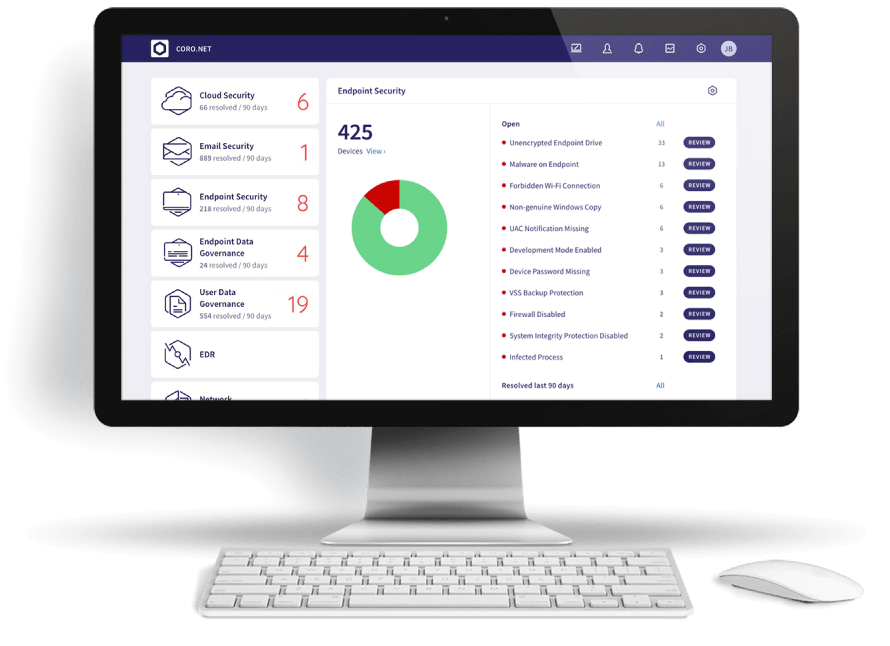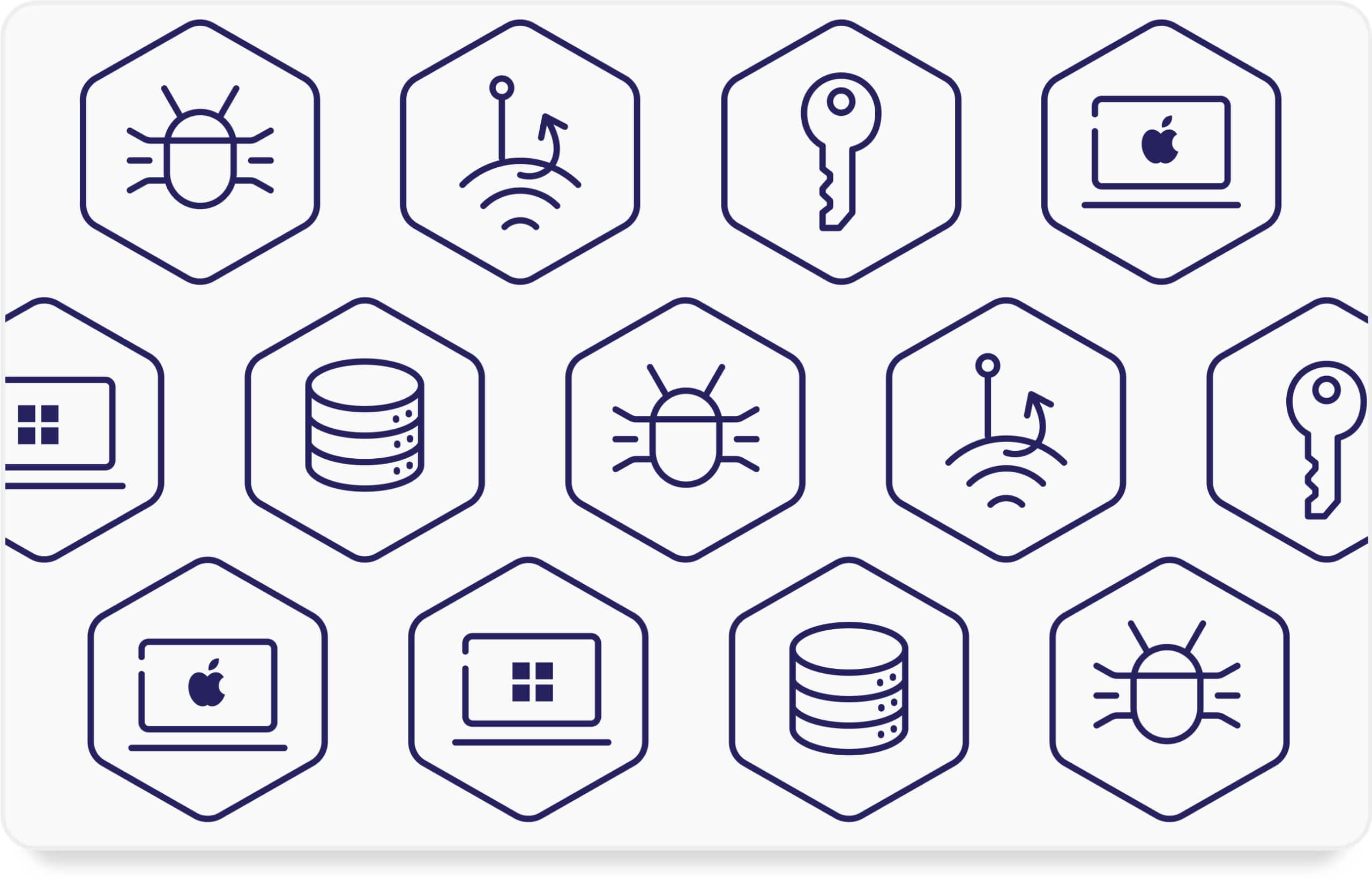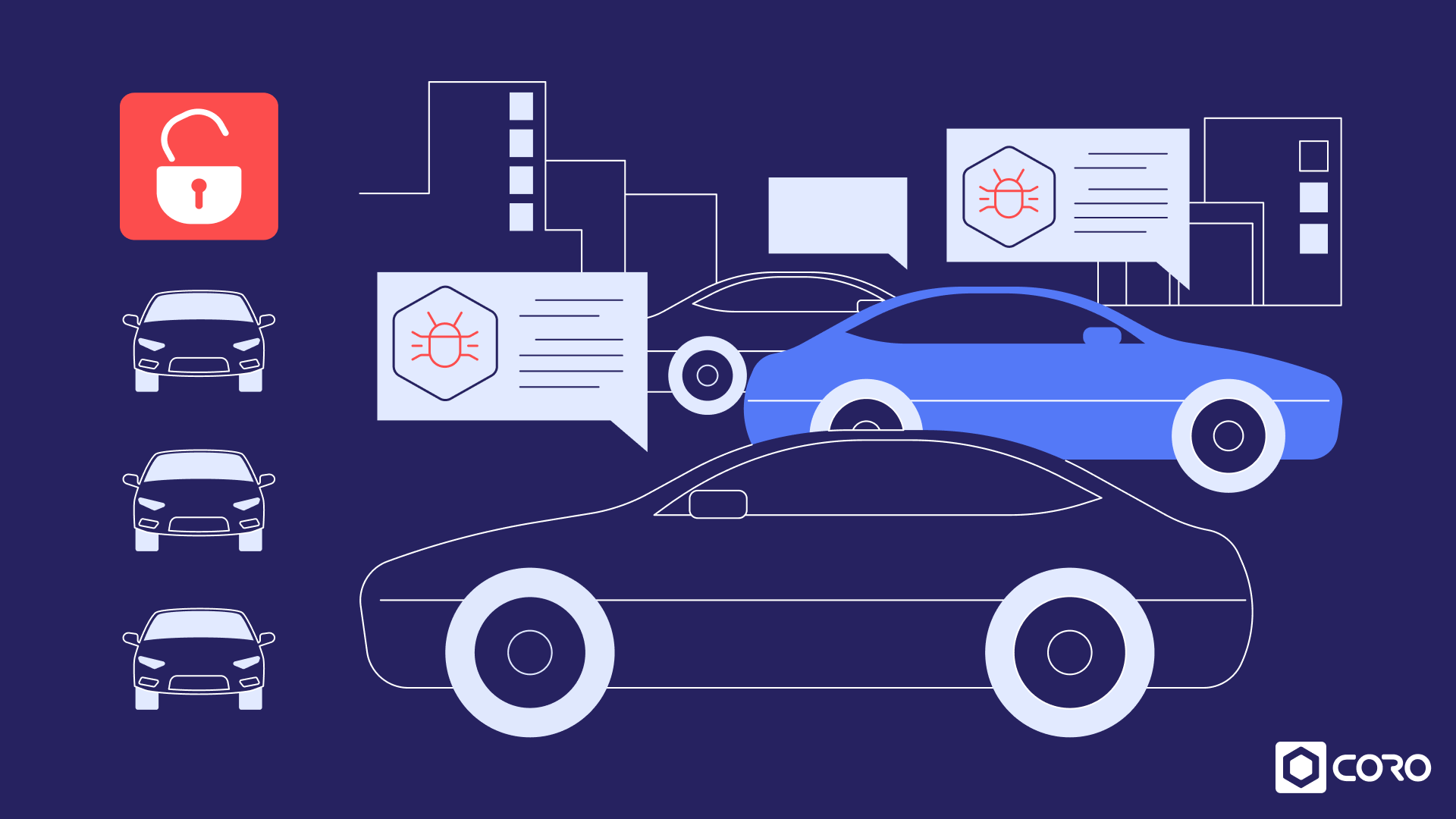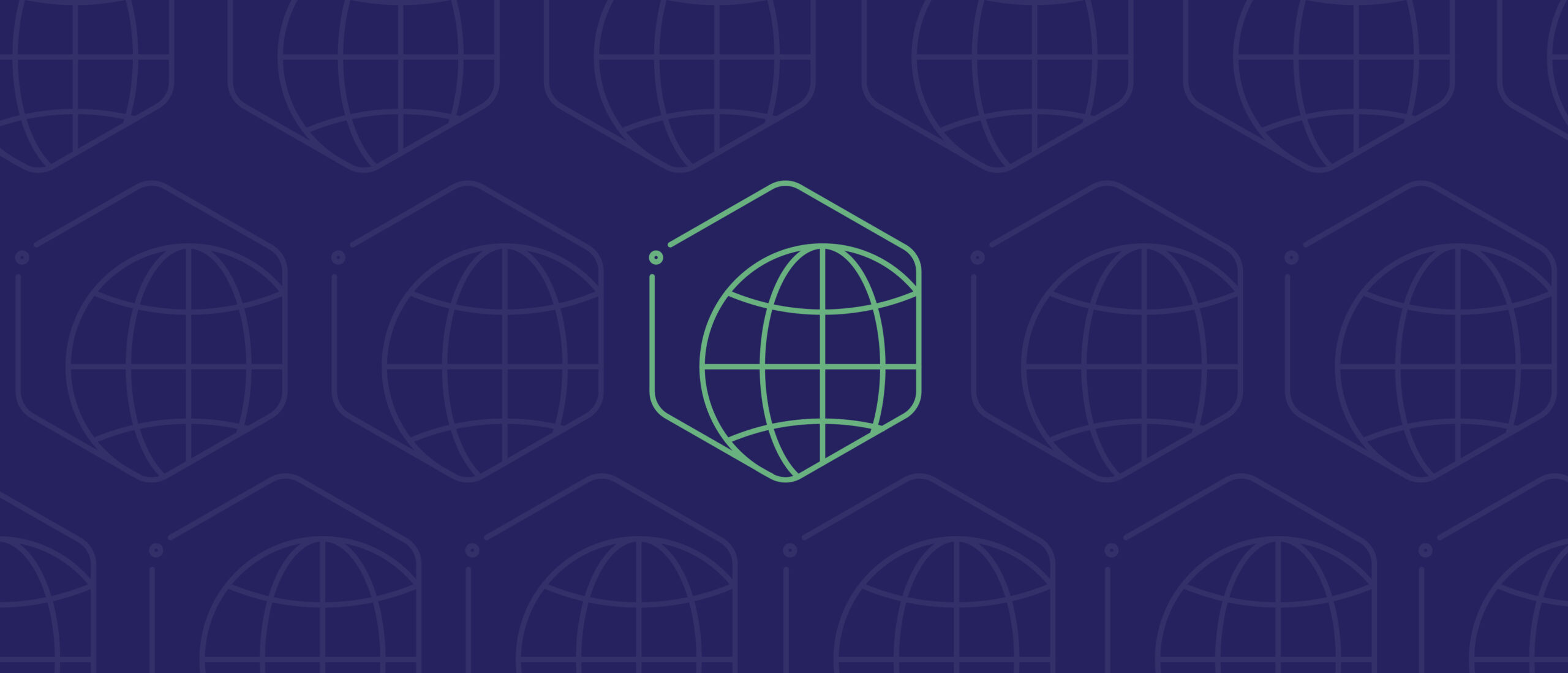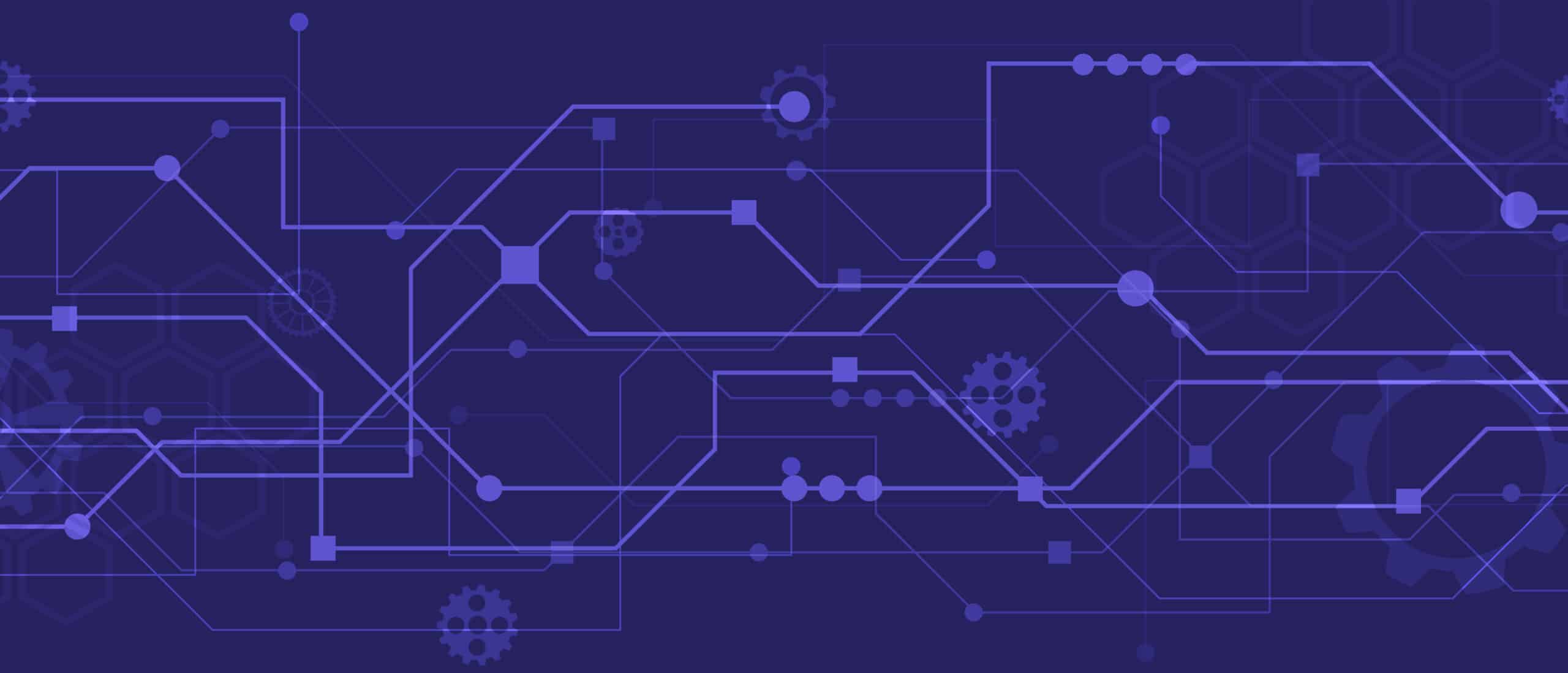Our world is reliant on technology. It shapes and influences nearly everything we do—from the moment we wake up until we go to sleep. And this applies to both our personal and professional lives. So, as we move into the future, cybersecurity will need to play an integral role to fortify our societal norms, economic structures, and the very fabric of our interconnected world.
Organizations around the world spent around $150 billion on cybersecurity in 2021. What’s more, the worldwide cybersecurity market is projected to grow by 10.48% from 2023 to 2028, resulting in a market volume of $273.60 billion by 2028.
In this article, we will take a glimpse of some of the latest trends as we explore the rise of artificial intelligence, automated security systems, and more elaborate phishing attacks. We will also make a few predictions about cyber-security threats and the future of cybersecurity professionals.
Modern Cybersecurity Methods
We’ll start with a quick baseline of cybersecurity, which focuses on protecting computer systems, networks, programs, and data from unauthorized access, attacks, damage, or theft.
The primary objective of cybersecurity is to ensure the confidentiality, integrity, and availability of information and computing resources. So, to do this, the industry relies on a range of technologies, processes, and practices specifically designed to safeguard digital assets.
We can consolidate the key components of cybersecurity into these five aspects:
- Network security: Securing computer networks from unauthorized access and cyber-attacks through firewalls, intrusion detection systems, and encryption.
- Endpoint security: Securing individual devices (endpoints), such as computers, smartphones, and tablets, to prevent malware infections and unauthorized access.
- Application and data security: Securing software applications and sensitive data, addressing vulnerabilities in design, development, and deployment, and protecting it through encryption and access controls.
- Identity and Access Management (IAM): Dealing with user identities and controlling access to systems and data to make sure that only those people authorized are able to interact with specific resources.
- Security awareness, training, and incident response: Educating users about cybersecurity best practices, raising awareness to prevent social engineering attacks, and developing strategies for incident detection, response, and recovery.
The Cost of Data Breaches
Data breaches pose significant challenges to our modern world because their impact can hit individuals, organizations, and society as a whole. The average cost of a data breach globally is estimated to be $4.45 million. What’s scarier is that during the first quarter of 2023, more than six million data records were exposed worldwide via breaches.
Some common causes of data breaches include weak and stolen credentials (for example, predictable phrases like “Password1” and “123456” make it easy for cybercriminals to gain access to sensitive information), application vulnerabilities, malware, and human error.
For example, T-Mobile suffered three data breaches in 2023. In the first breach, a malicious actor gained access to their systems and stole personal information, including names, emails, and birthdays, from over 37 million customers.
These incidents highlight the ongoing challenges and impact of data breaches on organizations and their customers. So, as we move forward, what can we expect of both breaches and cybersecurity?
Future Trends in Cybersecurity
As our technological landscape evolves, there are a host of strategic cybersecurity trends poised to shape our security posture. These trends, which encompass innovative technologies and the imperative for proactive defense strategies, are set to define the year 2024 and beyond. So, let’s look at each of them in some detail.
Trend #1: Use of AI and Machine Learning
Artificial Intelligence (AI) and Machine Learning (ML) possess the ability to rapidly assess millions of events, detecting diverse threats such as zero-day vulnerability exploits by malware, pinpointing suspicious behavior that could result in phishing attacks, or recognizing actions that may lead to the downloading of malicious code.
So, the sudden accessibility of AI marks a major turning point for the cybersecurity industry. Of course, while these essential tools can aid in the fight against cybercrime, they must be used in combination with human expertise to achieve optimal results. For example, human analysts are still necessary to interpret the results and take appropriate action.
Trend #2: Hybrid Data Centers
Our second trend refers to the integration of on-premises data centers with public or private cloud services. This creates a hybrid infrastructure that requires robust security measures. The COVID-19 pandemic accelerated the growth of the worldwide data center market as a whole. The projected Compound Annual Growth Rate (CAGR) was 4.5% during the 2021 – 2026 period, and the value is expected to get to $251 billion by 2026.
The trend of hybrid data centers is gaining significant traction in 2023. This convergence of virtual, on-premises, and cloud infrastructures reflects the growing need for flexible and scalable data center solutions to meet the escalating data demands of modern businesses.
Trend #3: Hybrid Mesh Firewalls
The adoption of hybrid mesh firewalls is another significant cybersecurity trend that aims to address the challenges of evolving cyber threats. A hybrid mesh firewall is a type of firewall that combines the strengths of traditional defenses with newer, more advanced technologies to create a robust and adaptable security infrastructure. In other words, they are designed to protect data and applications across the entire network. The way this is done is by including features like intrusion prevention systems (IPS), deep packet inspection, application-layer filtering, and threat intelligence to create a multi-layered strategy.
A hybrid mesh firewall architecture is scalable and flexible, so it can allow organizations to adapt to changing network configurations and business requirements. This scalability can help companies grow or migrate their infrastructure to the cloud and integrate with both on-premises and cloud-based environments.
Trend #4: CNAPP (Cloud Native Application Protection Platform)
The rise of CNAPP solutions can help secure cloud-native applications and microservices. So, our fourth trend addresses the unique security requirements of these cloud environments.
CNAPP solutions are designed to streamline monitoring, detecting, and acting on potential security threats. You can think of them as an all-in-one cloud-native application security platform that can minimize human error and reduce the time it takes for teams to be notified after a threat has been detected. These platforms can also provide application and end-to-end cloud security for the entire CI/CD lifecycle, starting at early development and continuing through production.
In short, CNAPP can prevent cybersecurity threats by decreasing the number of cloud misconfigurations and providing combined and unique visibility of risks. This, in turn, results in a more prompt response to threats and less maintenance complexity (as it’s all included in a single tool).
Trend #5: Threat Exposure
Our fifth trend is the increasing exposure to diverse cyber threats due to the expansion of environments, devices, and software—which, in turn, leads to an expanding attack surface and the need for comprehensive security solutions.
For example, the Lookout Mobile Security report identified that 48% of sophisticated cyber actors had the tools and techniques for attacking both mobile and desktop devices. In fact, the average number of unique mobile malware samples grew by 51% in 2022, with approximately 77,000 unique malware samples detected every month!
This means that cybercriminals now have a wider range of potential entry points for malicious activities. The rise of cloud computing, the Internet of Things (IoT), and remote working have also contributed to the proliferation of potential attack vectors. So, we need a more proactive approach to identifying and mitigating new security vulnerabilities.
Trend #6: Geo-Targeting in Phishing Attacks
Geo-targeting in phishing attacks has become a notable trend in the cyber threat landscape, allowing cybercriminals to tailor their attacks to specific locations. In some cases, cybercriminals can employ traditional phishing techniques to hack into networks and extract valuable data and information. So, this approach enables them to create customized, localized phishing pages, increasing the likelihood of successful attacks.
Many of these attacks are engineered based on the recipient’s location. For instance, hackers have been found to use tools like Geo Targetly to create phishing links that redirect users to fake login pages tailored to specific regions. To prevent and mitigate the impact of geo-targeted phishing attacks, organizations will need to continuously update and enhance their security systems. By staying informed about evolving cyber threats and implementing robust security measures, your organization can safeguard its data from the ever-evolving threat of geo-targeted phishing attacks.
Predictions for the Coming Cyber Threat Landscape
We expect the cyber threat landscape to undergo significant changes. So, here are some of our key predictions for 2023 and beyond:
- Attacker Focus on Identity and Multi-Factor Authentication (MFA): We anticipate cyber attackers will increasingly target identity and MFA systems, exploiting vulnerabilities in these areas to gain unauthorized access to sensitive data. This prediction aligns with the emerging use of wipers and new attacks on nontraditional targets like edge devices.
- Proactive Security Measures: We also expect organizations to adopt more proactive security measures. This includes emphasizing the importance of cybersecurity awareness as well as employee training, and regular security audits to mitigate potential threats.
- Leveraging AI for Enhanced Cybersecurity: We believe the use of artificial intelligence and machine learning will become more prevalent in the fight against cybercrime. We expect AI-based security solutions, in particular, to play a crucial role in detecting and responding to threats with unprecedented speed and accuracy.
- Growing Sophistication of Cyber Threats: The cyber threat landscape is no doubt going to become even more sophisticated, with cybercriminals leveraging advanced technologies to breach and protect connected systems. This trend will possibly lead to a growing reliance on soft skills such as interpersonal communication, relationship-building, and problem-solving in countering cyber threats.
- Expansion of Attack Surface and Need for Comprehensive Security Solutions: We project the expansion of environments, devices, and software to lead to an increasing attack surface. So, organizations will need more comprehensive security solutions to address the evolving threat landscape and protect against a wide range of potential cyber threats.
Conclusion
As we look ahead, it’s important to recognize that the future of cybersecurity is difficult to predict, and the industry is subject to rapid changes. However, we have covered several key trends and predictions that can help us get some insight into what the coming years may hold.
Technologies like AI and ML offer several benefits to the cybersecurity industry, including real-time detection, accurate threat detection, reduced false positives, automated response, and predictive capabilities. Add to that a focus on identity and multi-factor authentication and the expansion of attack surfaces, and the result is cyber threats that are getting increasingly more sophisticated.
Organizations need to focus on addressing these new challenges to stay ahead of the curve. And we know how to help.Coro provides comprehensive security solutions to safeguard critical assets and strengthen the security posture of organizations. We are committed to proactive defenses that align the essential role of people, technical security capabilities, and restructuring of security functions to enable agility without compromising security. So, all of our security modules snap together to give you an AI-driven data engine, endpoint agent, and security platform with everything you need. Contact us today to find out more about what makes us different.

